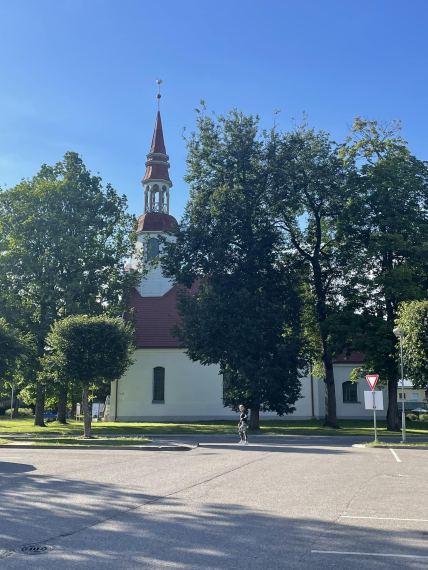
The name of the church first appears in documents in 1477. At that time it was called by the name of Saint Catherine. At that time, the parish included the inhabitants of the Pilslugaži, Burgas, Liellugaži and Čori manors. The patron of the church was one of the landlord, most often representatives of the Wrangel family.
Over the years, the church has suffered a sad fate - twice it was destroyed as a result of military operations, but thanks to local noblemen, especially the Wrangel family, it was restored again. The first time the church suffered in 1702 during the Northern War. The second time, after fifty years. The third time - in 1907, on the night of February 3 to 4, a fire broke out in the church. As a result, the roof structures were damaged, but the tower burned down completely and the bell fell into the church. It was restored by the sister of Baron von Wrangel. The restored church was consecrated on May 2, 1910 as the Valka-Lugaži Evangelical Lutheran Church.
The next major renovation of the tower began in the 1990s. In 1991, a rooster and a bomb that had been shot through during World War II were removed from the tower. The restoration was completed in 1993. Until August 29, 1995, it was kept in the Valka Museum of Local Lore, as the supporting structures in the tower were being replaced and repaired. On August 29, 1995, the rooster was erected in the tower, but a year later, i.e., in July 1996, the rooster's tail was already crooked. The error occurred in the bearing system. To fix it, the rooster was removed again.
On January 20, 1997, the parish council decided to begin the renovation of the church's interior. In 1907, when the church was renovated, the parish was formed by peasants from the surrounding estates, and the interior was dominated by wooden structures and panels, which created a heavy and at the same time solid impression in the room. Interesting details were found during the renovation. When restoring the church after a fire, the masters had covered the ornaments that decorated both the altar part and the nave with wooden panels. The arches of the altar room had been decorated with the same stylized wheel ornament, which has not been restored. During the renovation of 1997, all the ornaments were restored both in the altar room and in the arch, and in the hall. The wall painting regained its original tone - yellow in the altar room, light green in the large hall, white in the window openings. The wheel ornament was used as a symbol of St. Catherine. Tradition says - St. Catherine was tortured for her faith, but she claimed that she had dedicated her virginity to Jesus Christ, and He was her spouse. The enraged Emperor Maximilian II sent Catherine to the torture wheel to be tortured by breaking the girl's bones, but the torture device broke, stories say that the wheel was broken by angels, by a lightning strike, but Catherine was not even injured. Finally, by order of the emperor, Catherine was beheaded.
In 1998, the tower's observation deck and the observation deck for viewing the city were renovated. In 1999, a roof was put on part of the church.
The church is an architectural monument of national importance and restoration must still be continued.
Stylistically, the church is built as a basilica-type church. When viewed from above, it resembles the shape of an elongated rectangle. The exterior of the church is simple (it used to be a peasant church) and features many styles, which were facilitated by frequent renovations throughout the church's history, as each one carried the characteristic style of its time. The front part shows classicism and baroque features.
At the churchs celebrate lutheran Sunday Services